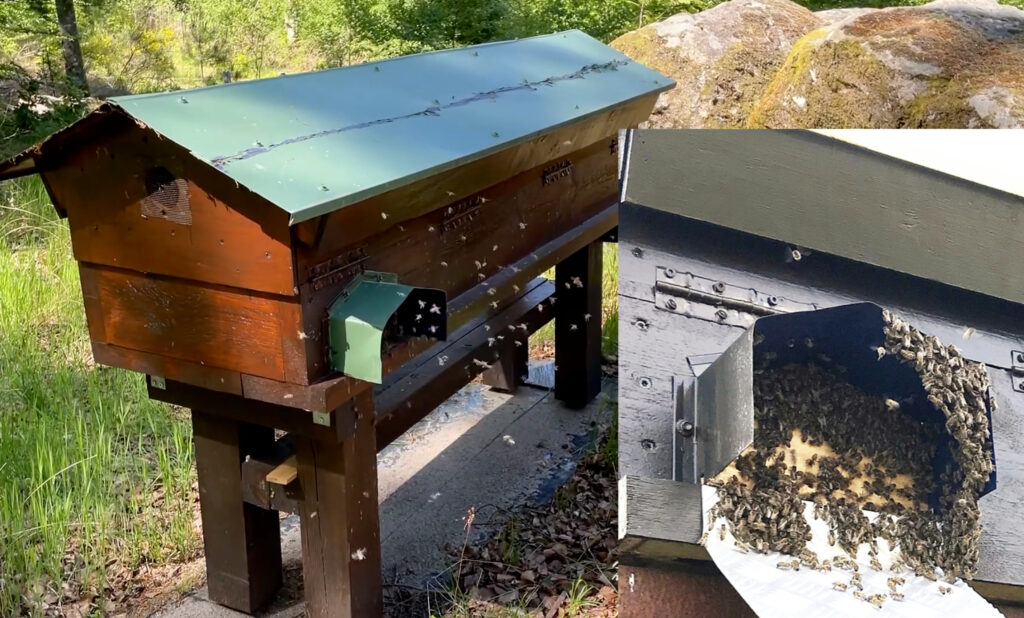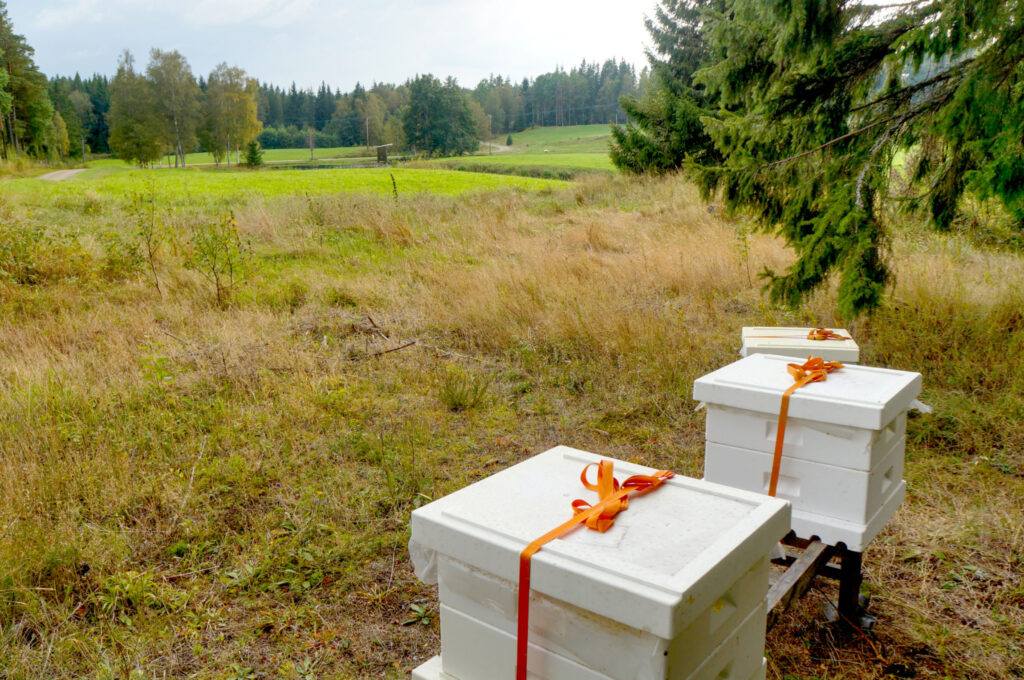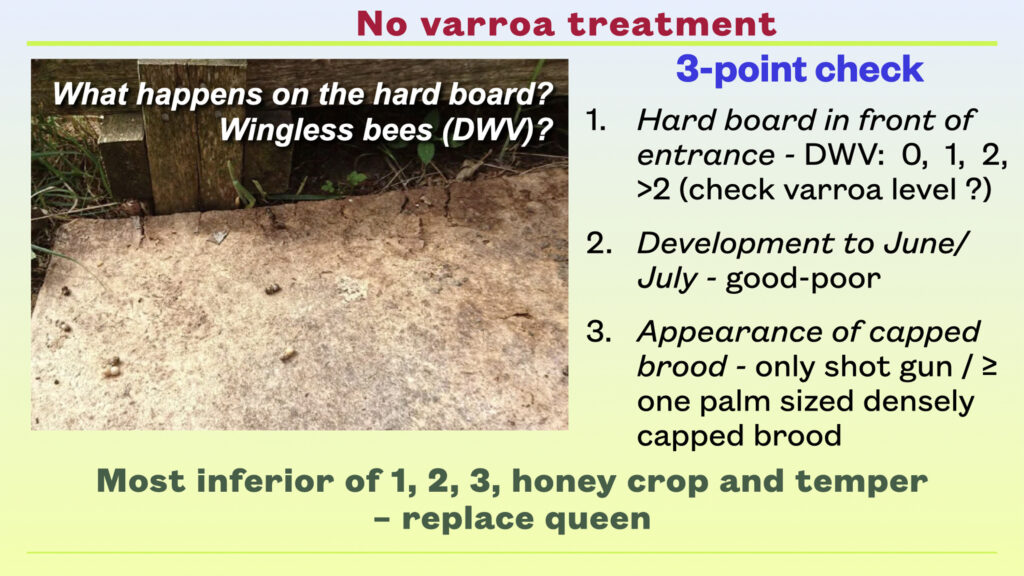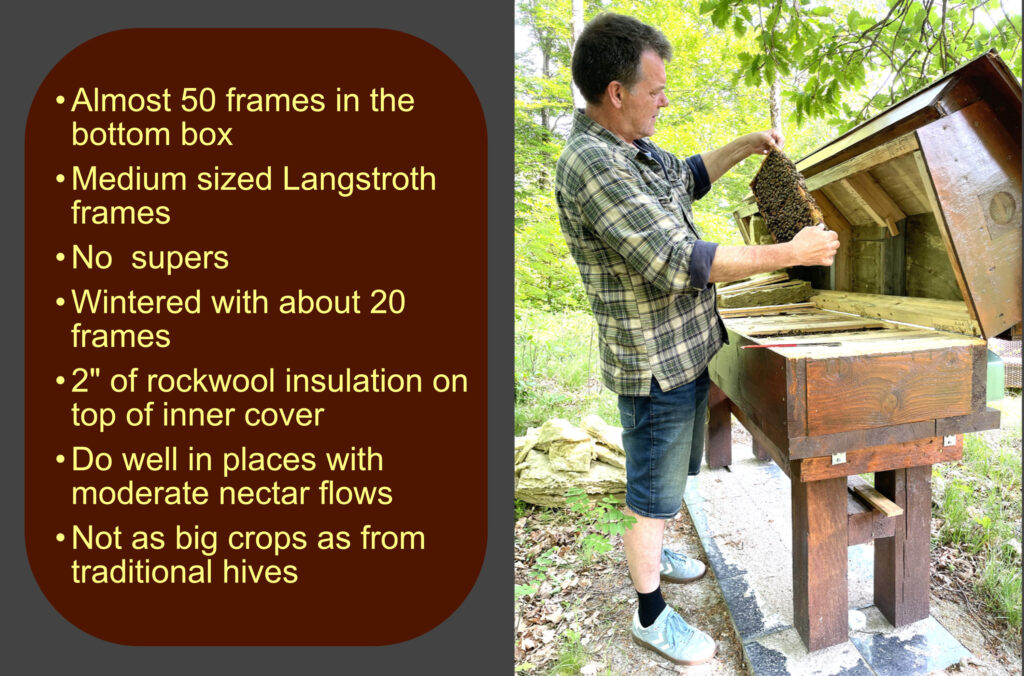Treatment-free beekeeping now
Now that we have had treatment-free beekeeping for a number of years in our town of Hallsberg, the microbiome, the collection and mixture of microbes on and in the bees, has become healthier and supports the immune system of the bee colony better.
Now, beekeepers who want to start treatment-free beekeeping can do so much more easily than before there were areas of completely treatment-free beekeeping from which to obtain colonies or splits.
Here in Hallsberg, we have gained experience that we share with others and that makes it easier for others to achieve treatment-free beekeeping more quickly.
Get started!
Try to establish an apiary 2-3 km (1.5-2 miles) away from bees treated for varroa. It may work at 1 km (1 mile) distance as well, but then you may face disturbance from visiting bees from treated colonies. 2-3 km is not enough for virgin queens to completely avoid mating with drones from treated colonies in neighboring apiaries. As for varroa resistance, and even more so for virus resistance, this is actually not fatal. It seems that most of the 20 drones mating with the virgin queens come from the treatment-free colonies. This is for two important reasons.
The drones in untreated colonies are healthier and compete better for the virgin queens.
There is no culling of drone brood in controlling varroa. On the contrary, there are more drones in untreated communities, and early in the season.
We recommend starting up the apiary with 3 splits with laying queens or wintered colonies, to begin with, from sites that have been treatment-free for at least some years. Among treatment free colonies it does not make sense to actually select for the lowest varroa level. Select according to the 3-point list at the end of the article here: https://elgon.es/TreatmentFree.html
Read that whole article carefully.
Virgin queens are mated in the treatment-free apiary, or in other treatment-free areas. Splits are made from all good survivors and placed in your own treatment-free apiary. Include the queen of the colony in the split you move to another stand in the apiary. The queenless part of the colony remains in the old location. The field bees (and nurse bees) are important to ensure good quality queen cells. After one week, all queen cells but the finest are removed. This ensures a good quality queen and that this half of the original colony does not swarm.
A good way to start up can be to buy a split in the second half of May with an overwintered queen, grafted from a treatment-free breeding queen. Then you can immediately start making your own queens, which are best placed in a treatment free area for mating.
At the same time, you can order 2 splits from a treatment-free area that will be delivered with the current year’s laying queens. All offspring should receive sugar fondant the whole season to assure the build up of a strong colony for winter.
Examples of starting up treatment-free apiaries

In 2018, Peter Rishede from southern Sweden bought two bee colonies from Hallsberg that were not completely treatment-free. He placed them in a forest area 5 km from other bees. They soon were splitter to 4. Peter has never treated his bees, i.e. they became treatment-free immediately. Occasional winter losses due to too small winterized swarms and the like.
Closer than desirable to non-treatment-free bees
In 2019, Sibylle Kempf in a nearby town bought three colonies from Hallsberg that were not completely treatment-free. They were placed about 1 km to a dozen other non-treatment-free bees. Over the years, additional bees were purchased from Hallsberg and splits were made from the original ones. She wintered more colonies each year, 13 in the autumn of 2023. No winter losses except this last winter which was long and cold. Especially weak colonies gave up. The average winter loss over the five years is just over 7%.
Do you want to use other type of bees than the treatment free you buy? That is also possible. Then you have to do as they did in Hurdal in Norway or on the island of Fernando de Norhona. But that will be another blog post. You can though find the information elsewhere on this blog.



I had my first losses since 2019 because it was my first real “Swedish” winter and now I realize that I need to rearrange the frames and do so in late fall so there is more honey on top .I have also to restrict the hives inside space from the sides so they do not freeze on brood in November like it was the case in novembers first very cold spell when they would not move up to honey stores and probably never felt that winter was actually coming.
I am climate zone 5. So far I did not use queen excluders but I might do so now to keep the bees breeding area down and honey on top, or I keep capped honey frames above them always.
I always thought bees act natural and move breeding down and food up before winter but I was wrong. Seems they are too much life stock now.
Erik wrote it was the weak ones but I had only one dink now in march 2024 which died. The other 4 went strong into the cold spell which killed them.
I have had no mite problems with them.
I have learned my lesson and will do my best to build up again with splits and be a better beekeeper.
There are differences between colonies how they store nectar/honey. They can behave differently in different times of the year. And also when they fire up brooding in spring, they can react differently to their amount and place of storage of food and how depandant they are on possibilites of getting pollen from outside. When you have reached the number of colonies you want you can more efficiently use these differences as selection parameters when it comes to choosing colinies to make splits or breed from.
/Erik